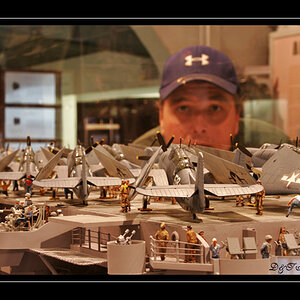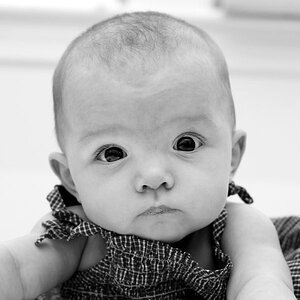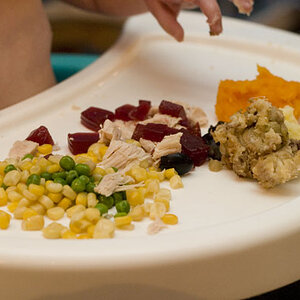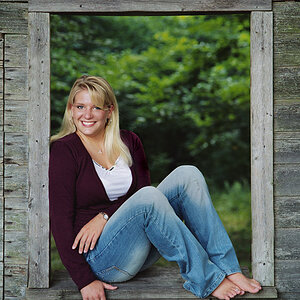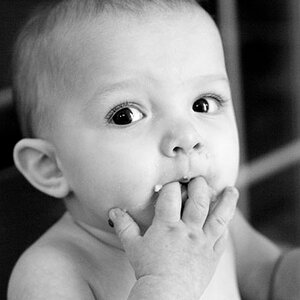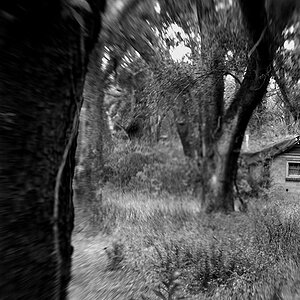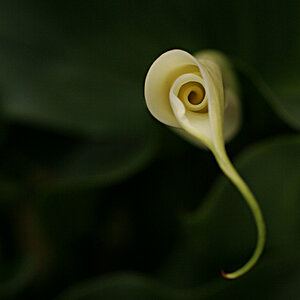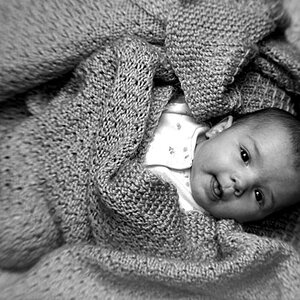Navigation
Install the app
How to install the app on iOS
Follow along with the video below to see how to install our site as a web app on your home screen.

Note: This feature currently requires accessing the site using the built-in Safari browser.
More options
You are using an out of date browser. It may not display this or other websites correctly.
You should upgrade or use an alternative browser.
You should upgrade or use an alternative browser.
the zone system- a query
- Thread starter mathews
- Start date
Petraio Prime
TPF Noob!
- Joined
- May 28, 2010
- Messages
- 1,217
- Reaction score
- 0
- Location
- Ohio
- Can others edit my Photos
- Photos NOT OK to edit
how will you distinguish which zones a colour is placed in, when intensity of light differs.
The zs is for B&W. It refers to shades of grey.
Petraio Prime
TPF Noob!
- Joined
- May 28, 2010
- Messages
- 1,217
- Reaction score
- 0
- Location
- Ohio
- Can others edit my Photos
- Photos NOT OK to edit
but some say the zs can be practised in colour photography too.
Well, how do you account for the various colors in terms of density? What value is medium green vs medium blue? Some colors are darker than others.
benlonghair
TPF Noob!
- Joined
- Jun 1, 2009
- Messages
- 1,072
- Reaction score
- 0
- Location
- Woodstock, CT
- Can others edit my Photos
- Photos OK to edit
but some say the zs can be practised in colour photography too.
Well, how do you account for the various colors in terms of density? What value is medium green vs medium blue? Some colors are darker than others.
Um... No?
Mike_E
No longer a newbie, moving up!
- Joined
- Jan 26, 2007
- Messages
- 5,327
- Reaction score
- 266
- Can others edit my Photos
- Photos OK to edit
Colors are irrelivent to your camera. A medium red can and should have the same value as a medium blue or green.
Light values (the amount of light) are the only thing that matter.
In film it takes a certain amount of light to properly energize the chemical reaction which brings about the image. In digital it takes the same amount because the camera manufacturers knew that they couldn't successfully make both 1: film cameras obsolete (in some's view) and 2: make everyone learn a wholly new system of exposure.
With practice and patience this will all become clear. There are some who would tell you that the ZS is not worthwhile. Ignore them, they're talking about analog printing anyway (or just using program mode exclusively). What you will get out of learning the system will benefit you in every phase of photography.
Good luck and keep at it.
Light values (the amount of light) are the only thing that matter.
In film it takes a certain amount of light to properly energize the chemical reaction which brings about the image. In digital it takes the same amount because the camera manufacturers knew that they couldn't successfully make both 1: film cameras obsolete (in some's view) and 2: make everyone learn a wholly new system of exposure.
With practice and patience this will all become clear. There are some who would tell you that the ZS is not worthwhile. Ignore them, they're talking about analog printing anyway (or just using program mode exclusively). What you will get out of learning the system will benefit you in every phase of photography.
Good luck and keep at it.
Petraio Prime
TPF Noob!
- Joined
- May 28, 2010
- Messages
- 1,217
- Reaction score
- 0
- Location
- Ohio
- Can others edit my Photos
- Photos NOT OK to edit
but some say the zs can be practised in colour photography too.
Well, how do you account for the various colors in terms of density? What value is medium green vs medium blue? Some colors are darker than others.
Um... No?
Of course they are. Blue is darker than yellow, for instance.
fokker
No longer a newbie, moving up!
- Joined
- Jun 23, 2009
- Messages
- 2,829
- Reaction score
- 295
- Location
- New Zealand
- Can others edit my Photos
- Photos OK to edit
Petraio Prime
TPF Noob!
- Joined
- May 28, 2010
- Messages
- 1,217
- Reaction score
- 0
- Location
- Ohio
- Can others edit my Photos
- Photos NOT OK to edit
The range of values for the different colors is not the same. Don't be silly.
In any case, the zone system depends on B&W film development manipulation, which simply is not feasible with color materials. You get uncorrectable color shifts.
Steve01
TPF Noob!
- Joined
- Jun 24, 2010
- Messages
- 290
- Reaction score
- 2
- Location
- Depend on the temperature - NJ or FL
- Can others edit my Photos
- Photos OK to edit
The purpose of the zone system is to process the image so that Zone 0 at one end is dead black and Zone 10 is the specular highlights, paper white.
All other zones will have detail, and the image will be processed to expand or compress the dynamic range of the image to fit into Zones 1 through 9.
With film you could over expose and under develop, or under expose and over develop, depending on whether you wanted to expand or compress the dynamic range.
You're dealing with luminosity with the Zone System not color.
You're dealing with putting brightness values into the zones.
All other zones will have detail, and the image will be processed to expand or compress the dynamic range of the image to fit into Zones 1 through 9.
With film you could over expose and under develop, or under expose and over develop, depending on whether you wanted to expand or compress the dynamic range.
You're dealing with luminosity with the Zone System not color.
You're dealing with putting brightness values into the zones.
Derrel
Mr. Rain Cloud
- Joined
- Jul 23, 2009
- Messages
- 48,225
- Reaction score
- 18,941
- Location
- USA
- Website
- www.pbase.com
- Can others edit my Photos
- Photos OK to edit
I don't like to hang out with logical, dispassionate, rational thinkers, erose86, so you're on my ignore list now...
Helen B
TPF Noob!
- Joined
- Sep 16, 2007
- Messages
- 3,296
- Reaction score
- 467
- Location
- Hell's Kitchen, New York
- Can others edit my Photos
- Photos NOT OK to edit
First you need to decide what metering method best suits the kind of images you wish to make, bearing in mind the post-exposure methods you may be using.
It may help to think of what the Zone System does at its most basic level: it is intended to manipulate the dynamic range of the film to match the brightness range of the subject, while taking into account the photographer's intentions for the look of the finished image. The other simple way to describe the Zone System is the concise explanation of 'expose for the shadows, develop for the highlights'.
Think about what manipulations can be made during the development of colour film. Reversal (slide) film has a fairly narrow dynamic range when processed normally. Changing the length of time the film spends in the first developer affects both the dynamic range the film can capture and the density range of the image on the film. Within a small range this can be achieved with little trade-off in terms of increased graininess and decreased colour fidelity. Some films are better than others in this respect. You can pull most reversal film about half to one stop to increase dynamic range (lower the contrast of the film), and push up to about one stop to lower the dynamic range (and hence increase contrast and 'snap' - half a stop of push for this reason is not uncommon). If graininess is not an issue you can easily push further. If you are shooting reversal film it is best to get things right in camera (exposure, colour of light) and manipulate development if necessary. Most people will meter for the highlights, or for midtones in the well-lit parts of the scene (effectively the same result most of the time).
Modern negative (print) film has a very wide dynamic range when processed normally. If you expose for the shadows there will be very few scenes that result in blown-out highlights on the film. In many cases it may be better to place midtones in the preferred part of the film's response curve. You can use digital post processing to take the place of manipulation in development. You can also correct colour temperature issues more easily than you can with reversal film, especially if you have given the film enough exposure.
On to metering. Here's a problem. Meters are often 'inaccurate' when it comes to measuring strongly coloured objects, particularly at the ends of the visible spectrum. If all you want to do is to determine the brightness range of the scene you are in with a chance, if you use a reflected light meter in a sensible way - you should learn quite quickly how meter readings of various colours translate into results on film. You can make a very good estimate by measuring the range of incident light - Minor White covered this method in his Zone System Manual, and it has been further developed in the 'Beyond The Zone System' (BTZS).
I've missed a lot out, but I hope that there is something useful in all that.
Best,
Helen
It may help to think of what the Zone System does at its most basic level: it is intended to manipulate the dynamic range of the film to match the brightness range of the subject, while taking into account the photographer's intentions for the look of the finished image. The other simple way to describe the Zone System is the concise explanation of 'expose for the shadows, develop for the highlights'.
Think about what manipulations can be made during the development of colour film. Reversal (slide) film has a fairly narrow dynamic range when processed normally. Changing the length of time the film spends in the first developer affects both the dynamic range the film can capture and the density range of the image on the film. Within a small range this can be achieved with little trade-off in terms of increased graininess and decreased colour fidelity. Some films are better than others in this respect. You can pull most reversal film about half to one stop to increase dynamic range (lower the contrast of the film), and push up to about one stop to lower the dynamic range (and hence increase contrast and 'snap' - half a stop of push for this reason is not uncommon). If graininess is not an issue you can easily push further. If you are shooting reversal film it is best to get things right in camera (exposure, colour of light) and manipulate development if necessary. Most people will meter for the highlights, or for midtones in the well-lit parts of the scene (effectively the same result most of the time).
Modern negative (print) film has a very wide dynamic range when processed normally. If you expose for the shadows there will be very few scenes that result in blown-out highlights on the film. In many cases it may be better to place midtones in the preferred part of the film's response curve. You can use digital post processing to take the place of manipulation in development. You can also correct colour temperature issues more easily than you can with reversal film, especially if you have given the film enough exposure.
On to metering. Here's a problem. Meters are often 'inaccurate' when it comes to measuring strongly coloured objects, particularly at the ends of the visible spectrum. If all you want to do is to determine the brightness range of the scene you are in with a chance, if you use a reflected light meter in a sensible way - you should learn quite quickly how meter readings of various colours translate into results on film. You can make a very good estimate by measuring the range of incident light - Minor White covered this method in his Zone System Manual, and it has been further developed in the 'Beyond The Zone System' (BTZS).
I've missed a lot out, but I hope that there is something useful in all that.
Best,
Helen
Petraio Prime
TPF Noob!
- Joined
- May 28, 2010
- Messages
- 1,217
- Reaction score
- 0
- Location
- Ohio
- Can others edit my Photos
- Photos NOT OK to edit
Can we all just agree to ignore his comments? Clearly we all agree on the fact that they're ludicrous... so let's just agree to ignore them so we don't end up with another 25 page thread of nothingness.
Just help steer the OP in the right direction and be done with it.
It's been well established that he's on a "me vs. all of them" rampage... out to save the world of non-photography one TPF post at a time.
K... so put the popcorn and pitchforks away because it's just gonna end up the same place all the other ones do... it's not worth arguing with him... HE'S certainly not going to change... and to the HE in which I speak of... it's not worth arguing with US either because none of us agree with you. :greenpbl:
The zone system is for B&W work and has no direct application to color materials. The reason is that the zone system requires changes in contrast (paper or negative) to adapt to different brightness ranges of the subject. Color materials do not allow their contrast to be changed. You have just so many stops of exposure, no more, and you must keep the brightness range within that latitude of the film.
The possibilities that exist in B&W don't exist in color.
Last edited:
mathews
TPF Noob!
- Joined
- Jul 6, 2010
- Messages
- 15
- Reaction score
- 0
- Location
- india
- Can others edit my Photos
- Photos OK to edit
First you need to decide what metering method best suits the kind of images you wish to make, bearing in mind the post-exposure methods you may be using.
It may help to think of what the Zone System does at its most basic level: it is intended to manipulate the dynamic range of the film to match the brightness range of the subject, while taking into account the photographer's intentions for the look of the finished image. The other simple way to describe the Zone System is the concise explanation of 'expose for the shadows, develop for the highlights'.
Think about what manipulations can be made during the development of colour film. Reversal (slide) film has a fairly narrow dynamic range when processed normally. Changing the length of time the film spends in the first developer affects both the dynamic range the film can capture and the density range of the image on the film. Within a small range this can be achieved with little trade-off in terms of increased graininess and decreased colour fidelity. Some films are better than others in this respect. You can pull most reversal film about half to one stop to increase dynamic range (lower the contrast of the film), and push up to about one stop to lower the dynamic range (and hence increase contrast and 'snap' - half a stop of push for this reason is not uncommon). If graininess is not an issue you can easily push further. If you are shooting reversal film it is best to get things right in camera (exposure, colour of light) and manipulate development if necessary. Most people will meter for the highlights, or for midtones in the well-lit parts of the scene (effectively the same result most of the time).
Modern negative (print) film has a very wide dynamic range when processed normally. If you expose for the shadows there will be very few scenes that result in blown-out highlights on the film. In many cases it may be better to place midtones in the preferred part of the film's response curve. You can use digital post processing to take the place of manipulation in development. You can also correct colour temperature issues more easily than you can with reversal film, especially if you have given the film enough exposure.
On to metering. Here's a problem. Meters are often 'inaccurate' when it comes to measuring strongly coloured objects, particularly at the ends of the visible spectrum. If all you want to do is to determine the brightness range of the scene you are in with a chance, if you use a reflected light meter in a sensible way - you should learn quite quickly how meter readings of various colours translate into results on film. You can make a very good estimate by measuring the range of incident light - Minor White covered this method in his Zone System Manual, and it has been further developed in the 'Beyond The Zone System' (BTZS).
I've missed a lot out, but I hope that there is something useful in all that.
Best,
Helen
i am a little short of money, to learn the zone system which book should i opt for, if i had to choose between zone system manual and the negative.
Helen B
TPF Noob!
- Joined
- Sep 16, 2007
- Messages
- 3,296
- Reaction score
- 467
- Location
- Hell's Kitchen, New York
- Can others edit my Photos
- Photos NOT OK to edit
Do you want to learn about the Zone System for B&W, or metering for colour?
Best,
Helen
Best,
Helen
Most reactions
-
 442
442 -
 284
284 -
 280
280 -
 266
266 -
 216
216 -
 185
185 -
 181
181 -
 174
174 -
 169
169 -
 169
169 -
 163
163 -
 126
126 -
 117
117 -
I
103
-
 94
94
Similar threads
- Replies
- 24
- Views
- 2K
- Replies
- 9
- Views
- 330
- Replies
- 8
- Views
- 439
- Replies
- 6
- Views
- 543



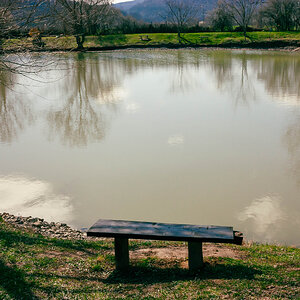
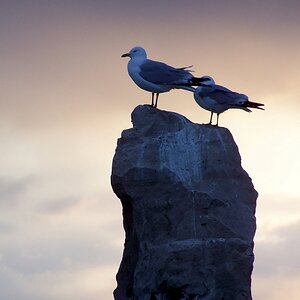
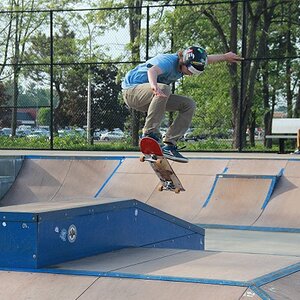
![[No title]](/data/xfmg/thumbnail/33/33490-cbbf9df0a1c31291ee7a3759afe943cc.jpg?1619736003)
